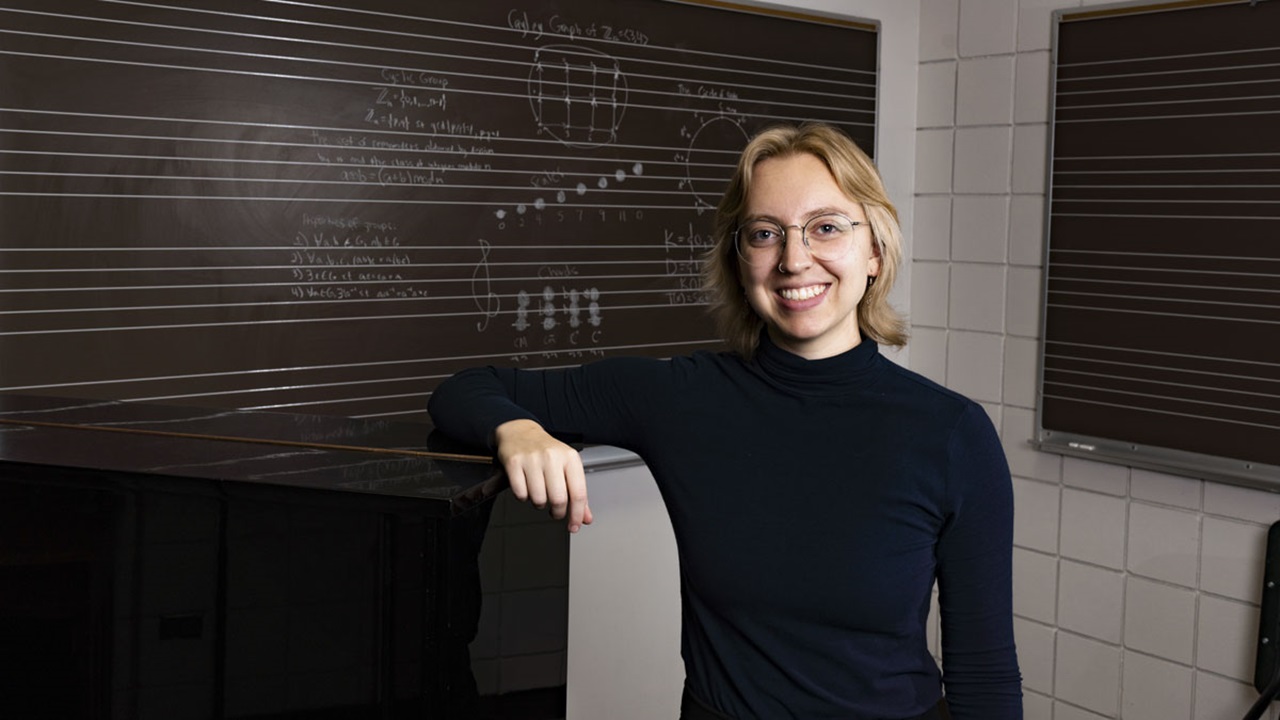USD Student Combines Math and Music in Award-Winning Research

“After my talk, I had about 10 students follow me out of the room and swarm around me, asking me about my research,” says Roberts, who minors in music. “The music connection was really exciting for them.”
Music and math are an exciting combination for Roberts, who won a speaker’s award from the Pi Mu Epsilon math honor society for her talk at the conference. Her paper, “Musical Systems with Zn–Cayley Graphs” is based on joint research with Gabriel Picioroaga, Ph.D., professor of mathematical sciences.
Roberts’ research project has two main goals. The first is to explain concepts of Western music by understanding its underlying mathematical structures using tools such as group theory. The second goal is to generalize these concepts to create new musical systems.
“There are 12 notes in an octave in Western music,” Roberts says. “Instead of dividing the octave into 12 notes, we could divide the octave into 15 notes. We can have a new music system with new rules about how chords, scales and musical counterpoints are constructed.”
A member of the USD Symphony Orchestra, a string quartet and a piano trio, Roberts – who plays the piano and violin – has extensive experience and interest in math and music. This interest is shared by her mentor and teacher Picioroaga.
“There is a great deal of overlap between math and music,” Picioroaga says. “It’s not only about ratios and harmonics but also differential equations, which represent sound waves, and some parts of group theory and graphs. These areas help us understand notes, chords and circle of fifths from Western music.”
As an educator, Picioroaga says studying music’s relationship with math illuminates mathematical concepts.
“For example, by coding a simple C note, one can see how the sine function uses the C-note frequency to generate the sound wave,” he says.
Picioroaga says he recognizes underlying math concepts while he plays the guitar without knowing how to read music. “I get a lot of help from Olivia and from USD music professor Paul Lombardi,” he says.
Roberts also credits Lombardi, Ph.D., and Amy Laursen, DMA, both associate professors of music, with assisting her research. As a music minor, she can’t get enough of the music theory classes both professors teach.
“For the minor, you’re required to take two semesters of music theory, but I'm currently in my fourth semester,” she says. “I just really like music theory.”
So far, Roberts has presented her research to primarily math-oriented audiences. At IDEAFest, USD’s annual research conference for students held in April, she will approach her talk from the musical side.
After graduating this May, Roberts plans to enter a graduate program in math and then work in academia or industry.



